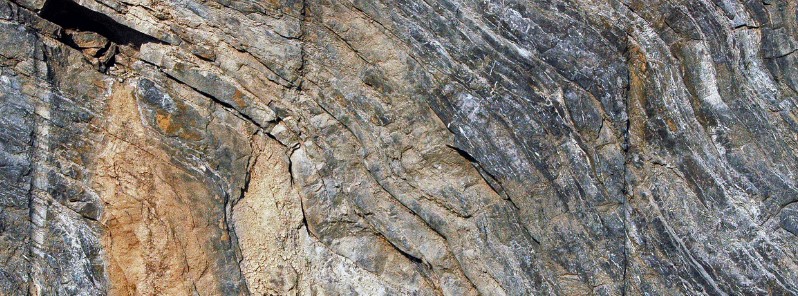Natural cycles: A link between formation of supercontinents and strength of ocean tides

A new study suggests there is a likely link between the cyclic strengthening and weakening of ocean tides over tens of millions of years and another, longer cycle – the formation of Earth's supercontinents every 400 to 600 million years. The new research suggests long-term changes in tidal energy, which control the strength of the ocean's waves, are part of a super-tidal cycle dictated by the movement of tectonic plates, with implications for the formation of our planet, its climate and the evolution of life on Earth.
When tectonic plates slide, sink and shift the Earth's continents to form large landmasses, or supercontinents, ocean basins open and close in tandem. As these basins change shape, they can strike forms that amplify and intensify their tides.
In the new study, tidal simulations projected hundreds of millions of years into the future suggest the Earth is now in the nascent stage of a tidal energy maximum, where strong tides will persist for roughly 20 million years. The oceans will go through several tidal cycles as the next supercontintent forms over the next 250 million years. Eventually, the tides will grow much weaker, just as they did during the two most recent supercontinents: Pangaea and Rodinia, according to the new study published in Geophysical Research Letters, a journal of the American Geophysical Union.
Scientists were aware tidal energy varied in the distant past, but the new study suggests there is a super-tidal cycle occurring over geologic timescales and linked to tectonic movement.
"Our simulations suggest that the tides are, at the moment, abnormally large," said oceanographer Mattias Green from Bangor University's School of Ocean Sciences in Menai Bridge in the United Kingdom and lead author of the new study. "And that really was our motivating question: If the tides were weak up until 200 million years ago, and they've since shot up and become very energetic over the past two million years, what will happen if we move millions of years into the future?"

Tectonic movement dictates not only the placement of Earth’s continents, but also the shape and size of its ocean basins. In this animation, tectonic movement is projected millions of years into the future. Viewers can see the continents slowly move toward a supercontinent formation. A new study in Geophysical Research Letters suggests the cyclic strengthening and weakening of ocean tides over tens of millions of years is likely linked to the formation of Earth’s supercontinents every 400 to 600 million years. When tectonic plates slide, sink and shift the Earth’s continents to form large landmasses, or supercontinents, ocean basins open and close in tandem. As these basins change shape, they can strike forms that amplify and intensify their tides.
Scientists simulated the movement of Earth's tectonic plates and changes in the resonance of ocean basins over millions of years.
The new research suggests the Atlantic Ocean is currently resonant, causing the ocean's tides to approach maximum energy levels. Over the next 50 million years, tides in the North Atlantic and Pacific oceans will come closer to resonance and grow stronger. In that time, Asia will split, creating a new ocean basin, according to the study.
In 100 million years, the Indian Ocean, Pacific Ocean and a newly formed Pan-Asian Ocean will see higher resonance and stronger tides as well. Australia will move north to join the lower half of Asia, as all the continents slowly begin to coalesce into a single landmass in the northern hemisphere.
After 150 million years, tidal energy begins to decline as Earth's landmasses form the next supercontinent and resonance declines. In 250 million years, the new supercontinent will have formed, bringing in an age of low resonance, leading to low tidal energy and a largely quiet sea.
The new study finds each tidal maximum lasts at most 50 million years and is not necessarily in phase with the supercontinent cycle.
Featured image credit: James St. John

Commenting rules and guidelines
We value the thoughts and opinions of our readers and welcome healthy discussions on our website. In order to maintain a respectful and positive community, we ask that all commenters follow these rules.